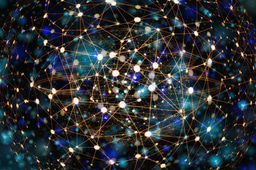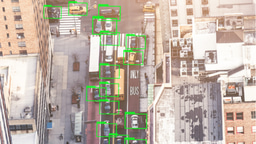Behind the Paper: Super-Resolution Stimulated X-ray Raman Spectroscopy
Understanding the interaction between intense X-ray free-electron laser (XFEL) pulses and matter has been a central focus of the atomic, molecular and optical group at Argonne National Laboratory (ANL) for almost two decades. While most studies focused on the interaction with individual isolated particles, it was of interest to try to understand the behavior of intense x-rays when propagating through a collection of such particles. Could there be a backaction of the particles on the x-rays themselves, as is well-known in the optical regime - where intense lasers shining through gases or liquids were known to produce new colors - which could either be used as new x-ray sources, or, when analyzed, contain fingerprints of the particle properties. So we embarked on this particularly intriguing study of the propagation of strong XFEL pulses through dense media. A landmark achievement came in 2012, when Nina Rohringer and colleagues demonstrated the first X-ray lasing pumped by XFEL pulses (Nature 481, 7382), leveraging transient population inversion created via photoionization. This discovery opened the door to observing stimulated X-ray Raman scattering (SXRS) using XFEL pulses tuned just below ionization thresholds—a powerful tool for probing ultrafast electronic processes.
Over the years, there have been several studies advancing both X-ray lasing and SXRS in different systems. The journey toward our recent results began around 2018, when Kai Li joined the group as a PhD student. Kai conducted theoretical studies and simulations on X-ray propagation through dense media using a powerful code developed by Mette Gaarde at Louisiana State University. These simulations revealed a rich landscape of nonlinear phenomena—including X-ray lasing, stimulated Raman emission, four-wave mixing, strong-field-induced transparency, and self-focusing. These early findings were published in Physical Review A (Li et al., 2020).
Motivated by these insights, we submitted a proposal in 2019 to study X-ray transient absorption spectroscopy at the European XFEL. The proposal was well received and awarded beamtime in 2020. To prepare, we assembled a fantastic team of collaborators, including Thomas Pfeifer, Christian Ott, Mette Gaarde, Jan-Erik Rubensson, and Michael Meyer. Given how precious XFEL beamtime is—typically limited to just 4–5 days per experiment—we began detailed planning nearly six months in advance. Weekly Zoom meetings brought together researchers from around the world, each contributing their unique expertise and perspectives.
Everything was on track—until the COVID-19 pandemic struck. Our scheduled beamtime had to be postponed indefinitely. Yet this disruption led to an unexpected and fruitful pivot. During our discussions, we realized that the spectral fluctuations inherent to stochastic SASE XFEL pulses could, rather than being a nuisance, offer valuable information for our experiment and others. This insight led us to develop a “ghost imaging” technique to reconstruct the single-shot incident XFEL spectrum from photoelectron time-of-flight data—enabling non-invasive spectral characterization. Our collaborators at European XFEL collected test data, and the results were promising. This method, published in Communications Physics (Li et al., 2022), is now potentially useful to many other XFEL experiments relying on stochastic pulses.
Eventually, the pandemic eased, and our experiment was scheduled to be among the first after reopening at European XFEL in late 2022. Due to lingering travel restrictions, we had to participate remotely via Zoom, while our European collaborators shepherded the on-site setup. Despite the challenges, the experiment was a success. We observed clear signatures of X-ray lasing and SXRS in real time. Preliminary data analysis showed that covariance analysis could extract high-resolution Raman features—sharp, dispersive peaks linked to ultrafast electronic transitions.
To make sense of the data, however, we needed rigorous simulations. That turned out to be far more demanding than we had anticipated. Each covariance map needed to capture the propagation of thousands of individual XFEL pulses—each with its own unique spectral structure—through a dense medium. Since a single-shot simulation could take over a day on a personal workstation, we turned to the Argonne Leadership Computing Facility (ALCF) for support. We optimized our code for parallel computing with OpenMP and ran extensive tests to maximize efficiency. Tens of terabytes of data were generated, and thanks to Lan Cheng at Johns Hopkins University, we had access to high-accuracy atomic parameters that allowed our simulations to closely match experimental observations.
Just as we were preparing to publish, Thomas Pfeifer proposed a bold new idea: applying a super-resolution approach to SXRS analysis. Rather than using the full measured spectrum for each shot, we retained only the peaks of the spectral spikes—setting the rest to zero. Kai quickly implemented this approach, and the results were stunning: we could now resolve features from energy levels that were previously indistinguishable. This super-resolution s-SXRS technique allowed us to probe electronic states with unprecedented clarity.
While this super-resolution SXRS demonstration used a neon gas sample, the technique holds immense potential for studying complex systems. It relies only on standard SASE XFEL pulses—widely available at existing facilities—making it highly accessible for many ultrafast science applications. It is amazing that such a simple experimental setup—passing stochastic XFEL pulses through a dense medium and measuring the transmitted spectrum—when combined with innovative data analysis techniques, can uncover electronic dynamics and structural details with unprecedented clarity.
This has been a long, sometimes winding road—but one filled with exciting science, resilient collaboration, and a fair share of surprises. We hope our work inspires others to continue pushing the boundaries of what is possible with X-ray spectroscopy.
Follow the Topic
-
Nature

A weekly international journal publishing the finest peer-reviewed research in all fields of science and technology on the basis of its originality, importance, interdisciplinary interest, timeliness, accessibility, elegance and surprising conclusions.





Please sign in or register for FREE
If you are a registered user on Research Communities by Springer Nature, please sign in